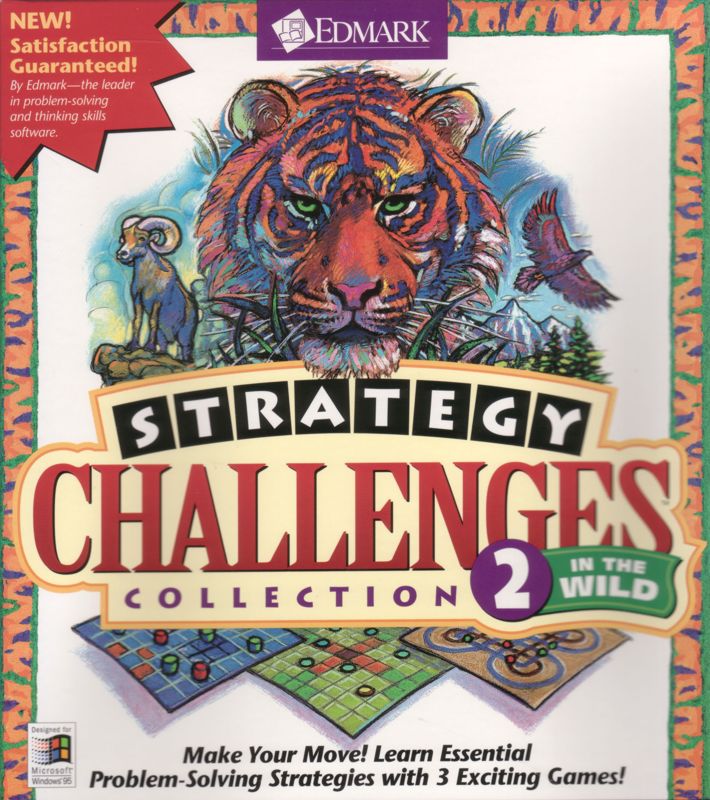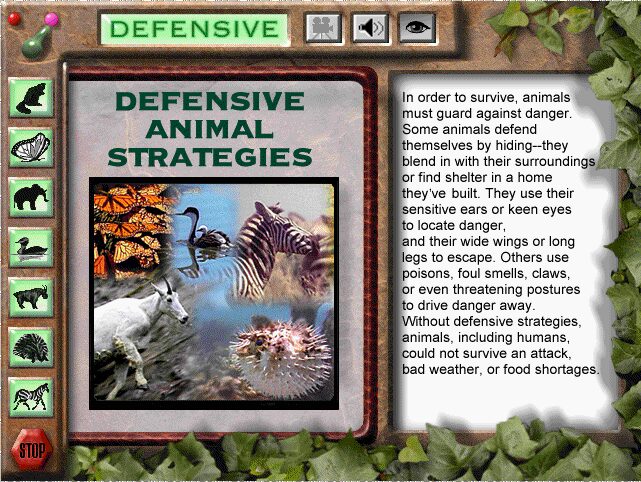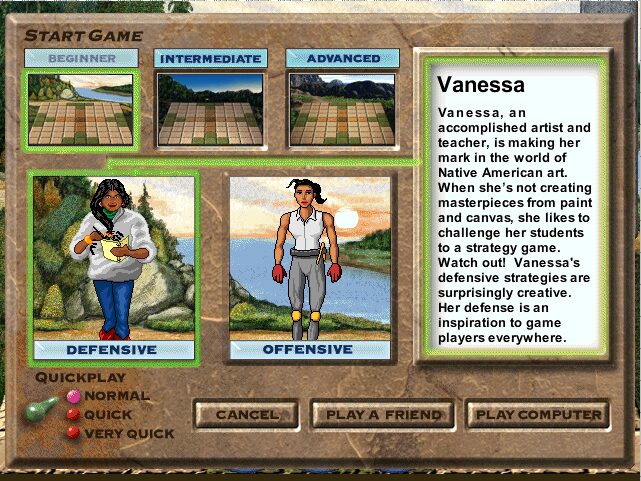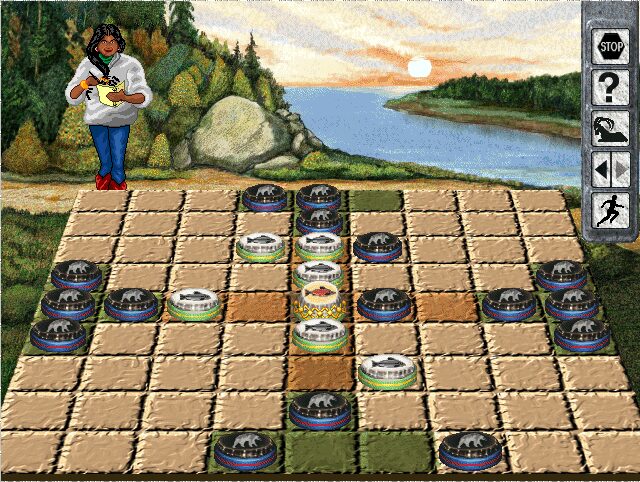Retro Replay Review
Gameplay
Strategy Challenges Collection 2 delivers a trio of intellectually stimulating experiences by introducing Jungle Chess, Tablut, and Surakarta, each drawn from centuries-old board traditions. From the get-go, players will notice that while these titles share a common turn-based structure, their objectives and tactics diverge sharply. Jungle Chess employs a hierarchy of animal pieces and terrain hazards; Tablut pits a lone king against encircling guards in an asymmetrical escape battle; and Surakarta demands careful navigation of looping paths to execute captures.
(HEY YOU!! We hope you enjoy! We try not to run ads. So basically, this is a very expensive hobby running this site. Please consider joining us for updates, forums, and more. Network w/ us to make some cash or friends while retro gaming, and you can win some free retro games for posting. Okay, carry on 👍)
In Jungle Chess, you must advance your animals—ranging from mice to elephants—across dens, rivers, and trap squares. Each terrain type imposes unique movement rules and capture conditions, forcing you to plan several moves ahead. The sense of progression comes not only from eliminating opposing pieces, but from outmaneuvering them through choke points and avoiding dangerous trap zones that can turn the tide in a single move.
Tablut’s dual roles keep each match tense: attackers aim to surround the king, while the defender’s goal is a daring breakout. This role-swap mechanic ensures that every game feels fresh, as you must adopt entirely different mindsets when controlling the escaping monarch versus coordinating an enclosing phalanx of guards. Precision and foresight are paramount, since one misstep can allow the king to slip through your ranks.
Surakarta adds a racing element, with capturing only possible by looping your pieces around ornate circuits at the board’s corners. That mechanic rewards creative positioning rather than brute force, and makes for satisfying tactical puzzles when both sides jockey for control of the loop entrances. The game’s six animated AI opponents—each with distinct playstyles and difficulty tiers—offer a scalable challenge, and the hotseat mode enables face-to-face duels with friends. Additionally, optional videos on real-world animal strategies provide context and occasional strategic hints.
Graphics
The visual presentation across all three games leans toward clarity and faithful homage to their cultural origins. Jungle Chess features lush, hand-painted board textures, vibrant animal icons, and flowing water effects in the river zones. Each creature piece is distinctly drawn, ensuring you can identify mouse, leopard, or elephant at a glance—even when multiple pieces crowd a single square.
Surakarta’s board is rendered with elegant loops and ornamental scrollwork that recall traditional Javanese motifs. The looping paths light up subtly when a piece is selected, guiding your eye toward potential capture routes. While the color palette remains muted compared to Jungle Chess, the emphasis is on clarity and the smooth animation of piece movements, which helps you anticipate opponent tactics and track each turn’s flow.
Tablut adopts a more austere aesthetic, reflecting its Lapland and Scandinavian heritage. The board’s simple grid and minimal adornment keep the focus squarely on the strategic battle. Animations are clean and swift, with a subtle highlight on the king piece to remind you of the match’s asymmetrical stakes. The overall interface is crisp, free of clutter, and optimized for quick decision-making rather than flashy effects.
Across all modes, the menus and tutorials maintain a consistent style, blending modern usability with thematic touches. The instructional videos—explaining how certain animals survive through real-world strategies—are intercut with tasteful illustrations, adding both polish and educational flair without interrupting the core gameplay experience.
Story
Although Strategy Challenges Collection 2 does not feature a traditional narrative campaign, it weaves in cultural and educational elements that ground each game in its historical context. Before you launch a match, you’re offered brief text introductions outlining the origins of Jungle Chess in ancient China, Tablut’s roots among the Finns and Sami peoples, and Surakarta’s emergence from Indonesian royal courts.
The inclusion of short documentary-style videos on animal survival strategies doubles as both a tutorial and a cultural vignette. Watching how pack hunters coordinate or how solitary beasts evade danger adds thematic resonance to your in-game decisions. These segments are concise—typically under two minutes—but they succeed in making you feel connected to the real-world inspirations behind the pieces you move.
Tutorial dialogs and pop-up tips further bolster the educational experience. Instead of rote instructions, the game introduces move rules alongside anecdotes about tribal warfare tactics or ecological adaptations, subtly reinforcing why certain strategies are effective. This blend of history and gameplay keeps novices engaged while offering context for veterans seeking fresh insight.
While purists may miss a driving storyline or character development, the narrative scaffolding here serves its purpose: to educate and immerse you in the legacy of each board game. The focus remains squarely on strategy, but the cultural storytelling enriches each match with a sense of heritage and depth.
Overall Experience
Strategy Challenges Collection 2 stands out as a thoughtfully assembled bundle that caters to both serious strategists and curious newcomers. The variety of objectives—racing, escaping, and capturing—ensures that no two matches feel alike. The AI opponents’ diverse tactics and six difficulty settings provide a satisfying learning curve, while hotseat multiplayer promotes social interaction and friendly rivalry.
Graphically, the collection strikes a balance between aesthetic authenticity and functional clarity. Board designs and animations enhance the strategic mood without overshadowing the moves themselves. The integrated educational videos and contextual blurbs add meaningful flavor, making the package more than just a set of puzzles—you’re also engaging with centuries-old traditions.
From an accessibility standpoint, the tutorials are clear, and the rules are explained in bite-sized segments. The interface adapts well to both keyboard input and mouse control, and switching between games in the collection is seamless. For players seeking a deep, rule-driven challenge as well as those simply looking to explore unfamiliar classics, the learning curve feels fair and rewarding.
In sum, Strategy Challenges Collection 2 offers enduring replay value, educational enrichment, and a broad range of strategic scenarios. Whether you’re drawn by the thrill of ambushing opponents in Jungle Chess, orchestrating Tablut’s asymmetrical escape, or mastering the loop-based captures of Surakarta, this collection delivers a solid, intellectually engaging experience that’s well worth your time.
 Retro Replay Retro Replay gaming reviews, news, emulation, geek stuff and more!
Retro Replay Retro Replay gaming reviews, news, emulation, geek stuff and more!









Reviews
There are no reviews yet.